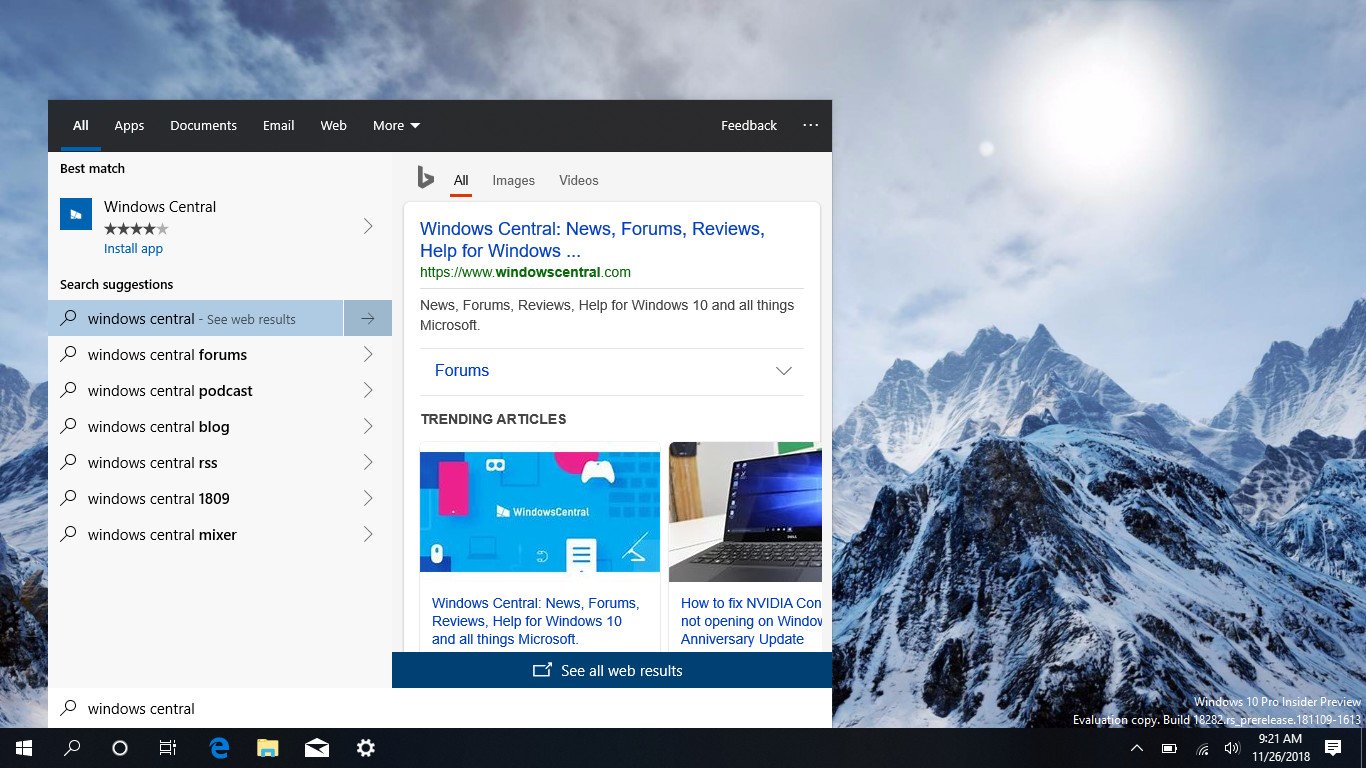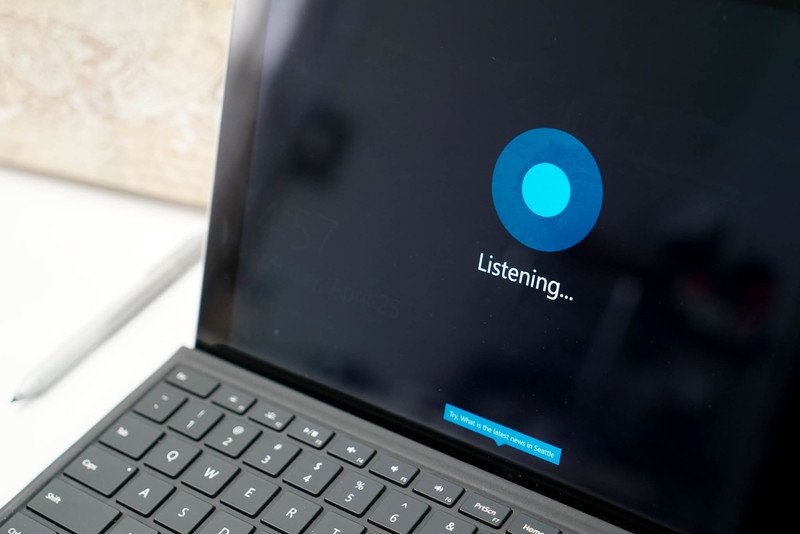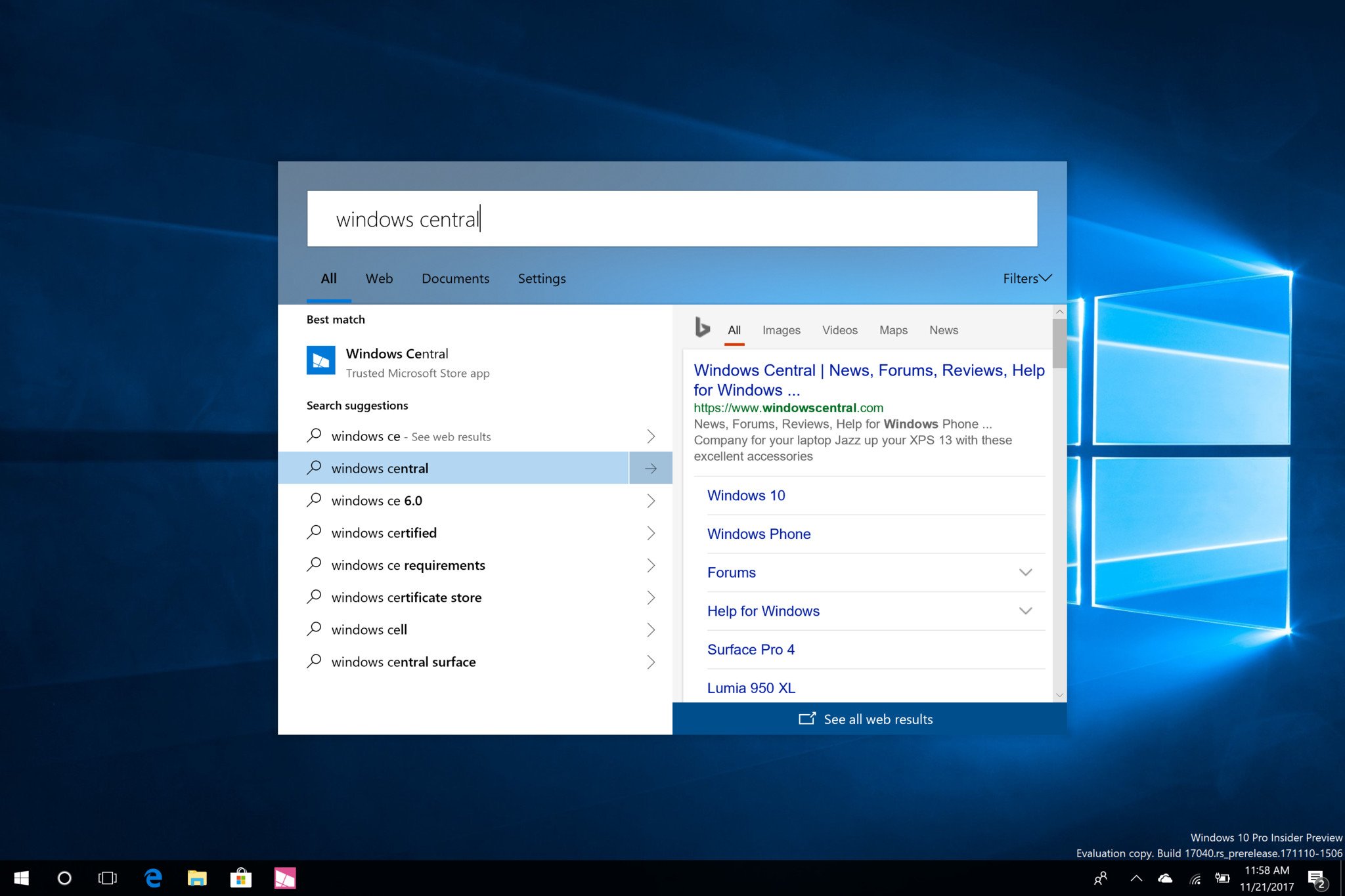Why splitting up Cortana and search in Windows 10 makes sense
Search and Cortana might split up in a future version of Windows 10. This is a good thing, as it allows for both experiences to improve without affecting each other


Many months ago, I wrote an article detailing Microsoft's plans to split up Cortana and Search in Windows 10, and preliminary work for the split is now starting to show up in the latest Insider Preview builds. While nothing is guaranteed to ship, it's time to revisit these plans and talk a little about the reason behind splitting up Cortana and Search in the first place.
Why Microsoft is splitting up Cortana and search is rather simple: it allows Microsoft to develop both experiences without affecting one another. Many will remember when Windows 10 first launched, the Cortana and search experience was dominated by Cortana. It was a Cortana centric feature, with search integrated into it. Users hated this, and just wanted search to be ... well, search. So, over the last several Windows 10 feature updates, Microsoft has worked to de-emphasize Cortana in Windows Search, opting to prioritize the search experience instead.
Now, of course, this means Cortana's experience has degraded over time on Windows 10. It's pretty much not there anymore as Microsoft has catered to ensuring the experience is more search orientated than assistant orientated. There are no more upcoming events, latest news, or day at a glance view on the homepage. Cortana's experience is now limited to ensuring it doesn't get in the way of the Windows Search experience. There's no room for Cortana to breathe, which is why Cortana's integration on Windows 10 sucks in the latest Windows 10 updates.
Splitting up search and Cortana gives Microsoft free reign over building out both experiences without one getting in the way of the other. Microsoft can build out a dedicated assistant experience for Cortana without degrading the Windows search experience, and the search can improve without degrading any assistant-based experiences. It's a win-win for everyone, especially those that have been hoping for an enhanced Cortana experience on Windows 10.
On that subject, Microsoft is planning to introduce a new chat-UI for Cortana on Windows 10 that behaves similarly to the new Cortana app on Android and iOS or the Google Assistant, as has been revealed in the past. Speech bubbles deliver your speech or text-based commands to Cortana, and Cortana responds with speech bubbles of its own. While this experience is designed to prioritize typing over talking, users will still be able to speak to Cortana with their voice if they wish.
Even with Cortana and search split up, both features will still be able to talk to each other. You will still be able to search for documents through the Cortana experience, and you'll still be able to access basic Cortana commands through search including "weather" and pick up where you left off. Microsoft is also planning to integrate Cortana throughout the OS rather than expect the user to head to the dedicated Cortana entry point for assistant-like tasks.

Where Microsoft is planning to move Cortana is still up in the air. As I wrote about in the past, early plans looked into building out the new conversation UI for Cortana into the Action Center or System Tray, which in my opinion makes the most sense. But, as with anything that's in development, those plans could change. There's no ETA for the Cortana and Search split to happen, and it may never even ship, as a lot of the work Microsoft is doing around these plans right now are experimental.
Get the Windows Central Newsletter
All the latest news, reviews, and guides for Windows and Xbox diehards.
If one thing is for sure, it's that Microsoft is thinking about this stuff, and does want to improve the Cortana and Search experiences on Windows 10. To do that, it must split them up so that one experience doesn't influence the other.

